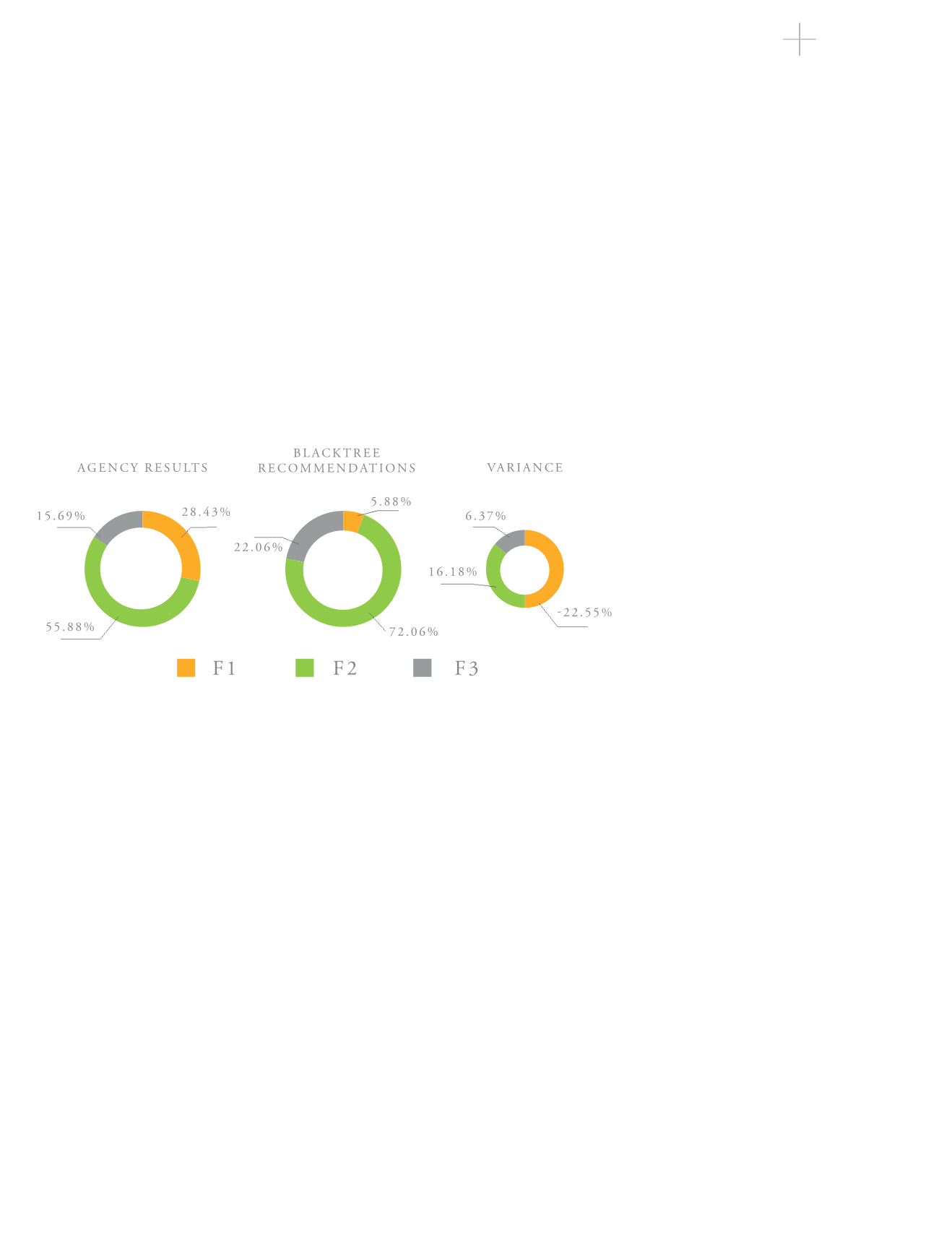
Summer ‘15
7
FEATURE
discrepancies
and
thus
skewed
outcomes. The variability seen between
admission and discharge can lead to
erroneous findings of no improvement
in functional abilities, when patients
actually have improved significantly.
The
following
table
portrays
discrepancies seen in functional scoring
upon thorough review. The left side
of the table shows a breakdown of
agency-provided functional scores from
assessments prior to being reviewed by
BlackTree OASIS and ICD-9 certified
clinicians. The right side of the table
shows the recommended functional
scores based on BlackTree’s reviews of all
available documentation in the patient’s
record. This documentation included but
was not limited to the comprehensive
assessment, therapy evaluations, and
physician documentation. These results
show that information already contained
in the patient’s chart is not always utilized
in truly assessing their functional needs.
There have been many tools and ideas
developed to assist in ensuring a more
static, uniform, standardized method
of performing a functional assessment.
Of note is the SHOW ME tool. SHOW
ME is a mnemonic that helps clinicians
easily remember what they must observe
before completing the various OASIS
functional items. This tool outlines
areas of the functional assessment that
the clinician should observe in order
to ascertain the best possible response.
SHOW ME also captures definitions
therapists use for “supervision,” “verbal
cuing,” and “assistance,” to assist with
standardization and informing nurses.
It also includes a reminder about the
many factors that can impair a patient’s
functional abilities: physical, cognitive,
and psychological disabilities or deficits
as well as environmental barriers and
medical restrictions. (Narayn, Salgado,
VanVoorhis 2009).
Although it may not seem obvious,
the discrepancies between responses
obtained by interviewing and those
obtained by observation are many.
Patients often overestimate their own
functional abilities out of pride, or
simply because they do not have a
sense of how unsafe they truly are.
They may state complete independence
with ambulation, when in fact they
hold onto walls and furniture when
walking and seem to be in a constant
state of trying to regain their balance.
When interviewing this patient, a
score of “0, no device needed” might
be chosen when in fact they are very
unsafe, ambulating without a device and
response “0” is not appropriate. Or they
may ambulate safely with their walker,
but frequently forget it beside their
chair and must be reminded of its use.
On interview, they state safe ambulation
with use of their walker and response
“2 - Requires use of a two-handed
device” is chosen. However, had the
patient been observed in order to obtain
the response, it would be noted that he
or she required a two-handed device
(walker) AND verbal cuing, supporting
response “3- Able to walk only with the
supervision or assistance of another
person at all times.”
So the quest to avoid common
functional scoring errors continues, and
the solutions are many. Some are tried
and true, such as the SHOW ME tool,
while many are industry driven, and
others agency-specific. Each agency
must choose an approach and ensure
that each and every clinician responsible
for OASIS completion is invested in
that approach. Intense OASIS training
is important, with intermittent refresher
courses following close behind based
on relevant agency-specific shortfalls.
An understanding of each OASIS
item, its intent, and provided guidance
will assist the clinician in obtaining
accurate responses. Agency leaders must
understand and be sympathetic to the
learning-curve involved for clinicians
new to home care. These ideas, tools, and
outcomes are not typically encountered
in other areas of practice.
HCAF
REFERENCES
Narayn, M., Salgado, J., VanVoorhis, A. (2009).
Show Me: Enhancing OASIS Functional Assessment.
Home Healthcare Nurse. Volume 7, no.1
Kammie Beversdorf, RN, HCS-O, HCS-D is
the Coding and OASIS Review Supervisor for
BlackTree Healthcare Consulting, which provides
financial, clinical, and operational consulting
services exclusively to the healthcare industry.
Thank you to BlackTree for actively participating
in HCAF and specifically for their support of
our Board meetings. For more information
and to thank them for their support, visit
BlackTreeHealthcareConsulting.com.


